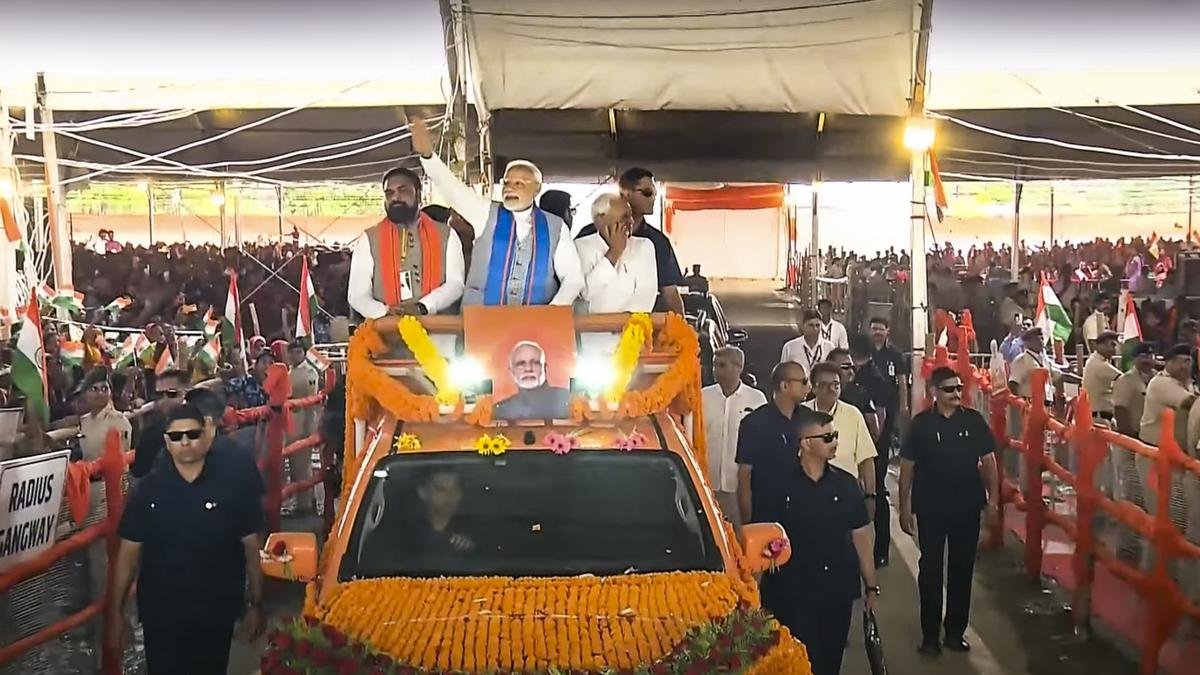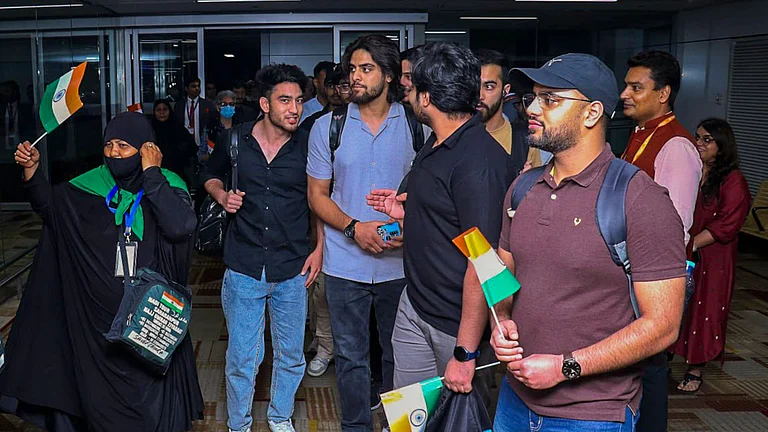In a high-voltage rally in Siwan, PM Modi rolls out mega development schemes ahead of Bihar Assembly Elections 2025. Photo Credit: PTI
With just months to go before the Bihar Assembly Elections 2025, Prime Minister Narendra Modi has intensified his focus on the politically crucial state. On his fourth visit to Bihar this year, PM Modi launched a massive development push worth over ₹9,500 crore, inaugurating and laying the foundation for a series of infrastructure projects in Siwan and other districts. But as development meets political strategy, the Prime Minister’s repeated visits are being seen as the Bharatiya Janata Party’s aggressive groundwork ahead of a fiercely contested election.
The visit comes at a time when the state’s political temperature is rising rapidly, and alliances are tightening. While the BJP-JD(U) alliance is projecting stability and development, the Opposition, led by the RJD and Congress, is banking on issues like caste reservations, unemployment, and price rise to regain lost ground.
Development Blitz with an Eye on the Ballot
In Siwan, PM Modi flagged off the Patliputra–Gorakhpur Vande Bharat Express, inaugurated a new locomotive built at Marhaura for export to Guinea, launched six sewage treatment plants under the Namami Gange project, and rolled out rural drinking water and electricity initiatives. Addressing a large crowd, Modi declared that Bihar’s days of “jungle raj” were over and that the NDA government had returned dignity, infrastructure, and jobs to the people.
The projects—valued at ₹9,519 crore—are being positioned by the BJP as proof of its commitment to Bihar’s development. Modi praised Chief Minister Nitish Kumar for preparing “the launchpad of Bihar’s growth” and declared that the double-engine government had brought the state back on track.
With the BJP setting its sights on increasing its tally from two to eight assembly seats in regions like Siwan, such rallies are no longer just ceremonial—they’re clearly electoral.
Opposition Questions Timing and Substance
The Opposition, however, is not holding back. Tejashwi Yadav of the RJD accused Modi of “poll gimmickry,” claiming that despite four visits in 2025 and over 200 speeches in the past decade, ground realities in Bihar remain unchanged. Unemployment, inflation, and law-and-order issues, he argued, continue to plague the state.
The Congress, too, has gone on the offensive, questioning the silence of the BJP-JD(U) government on the proposed 65% reservation for SC, ST, OBC, and EBC categories in state jobs and educational institutions. It accused the NDA of abandoning its promise of caste-based equity and claimed that Modi’s visits were aimed more at narrative building than addressing Bihar’s structural problems.
This growing tug-of-war between the development narrative and the social justice plank is expected to form the core of the upcoming Bihar elections.
Bihar Assembly Elections 2025: Battle Lines Drawn
Scheduled for late 2025, the Bihar Legislative Assembly Elections will determine the future of 243 seats. For the BJP, which swept the 2024 Lok Sabha elections nationally, the state elections are a litmus test for the effectiveness of its “double engine” government model in alliance with JD(U).
Nitish Kumar, who switched sides yet again in 2023 to rejoin the NDA, remains a key figure. While he continues to project himself as a development-focused administrator, cracks within the alliance and questions over leadership succession are surfacing quietly in the background.
Adding another layer of complexity is the Lok Janshakti Party (Ram Vilas), which has rebranded itself under the “Bihar First, Bihari First” banner. With a strong focus on youth and regional pride, it is trying to carve out space beyond the traditional RJD-Congress-BJP axis.
Key Electoral Issues: More Than Just Optics
While the BJP banks on mega infrastructure launches, its rivals are shifting the discourse to unemployment, rising costs of living, and caste-based inclusion. The Ganga rejuvenation plans, railway expansions, and electrification may appeal to urban and semi-urban voters, but rural dissatisfaction—especially among marginalized communities—could tilt the electoral balance.
Caste equations, especially in the wake of the caste census data and the dormant 65% reservation promise, are expected to play a defining role. Young voters under 35, who make up nearly 40% of Bihar’s electorate, will be the most sought-after group this election season.
Outlook
PM Modi’s Bihar visit may have been wrapped in the language of progress and pride, but the subtext was unmistakably political. The timing, optics, and announcements suggest that the BJP is preparing for an all-out campaign to retain its foothold in the state. For the Opposition, the challenge is not just countering Modi’s narrative but doing so with credible policy commitments and grassroots momentum.
As the Bihar Assembly Elections 2025 draw closer, every speech, every project launch, and every political barb will carry electoral weight. The battleground is active, and the campaign has already begun.




